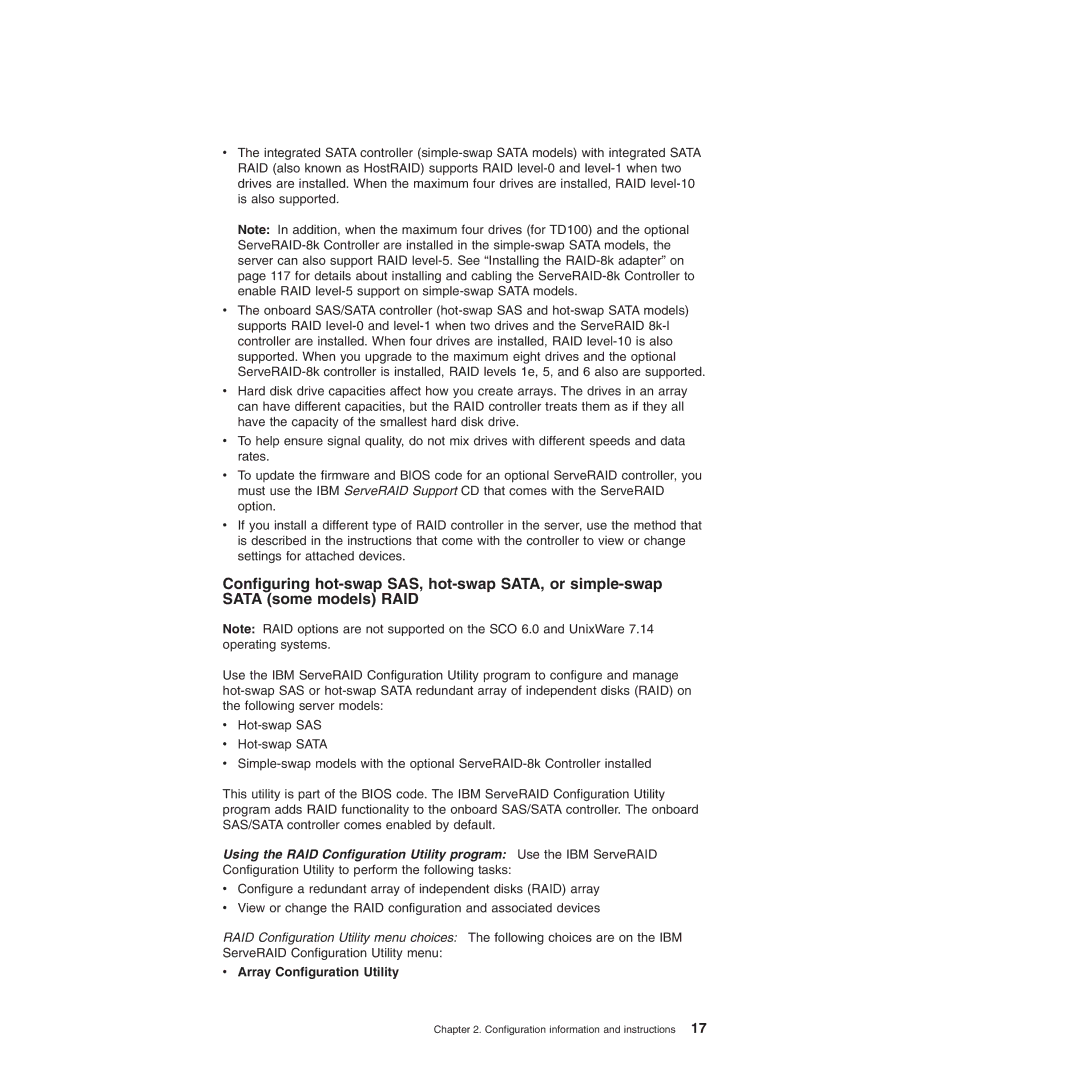vThe integrated SATA controller
Note: In addition, when the maximum four drives (for TD100) and the optional
vThe onboard SAS/SATA controller
vHard disk drive capacities affect how you create arrays. The drives in an array can have different capacities, but the RAID controller treats them as if they all have the capacity of the smallest hard disk drive.
vTo help ensure signal quality, do not mix drives with different speeds and data rates.
vTo update the firmware and BIOS code for an optional ServeRAID controller, you must use the IBM ServeRAID Support CD that comes with the ServeRAID option.
vIf you install a different type of RAID controller in the server, use the method that is described in the instructions that come with the controller to view or change settings for attached devices.
Configuring
Note: RAID options are not supported on the SCO 6.0 and UnixWare 7.14 operating systems.
Use the IBM ServeRAID Configuration Utility program to configure and manage
v
v
v
This utility is part of the BIOS code. The IBM ServeRAID Configuration Utility program adds RAID functionality to the onboard SAS/SATA controller. The onboard SAS/SATA controller comes enabled by default.
Using the RAID Configuration Utility program: Use the IBM ServeRAID Configuration Utility to perform the following tasks:
vConfigure a redundant array of independent disks (RAID) array
vView or change the RAID configuration and associated devices
RAID Configuration Utility menu choices: The following choices are on the IBM ServeRAID Configuration Utility menu:
vArray Configuration Utility
Chapter 2. Configuration information and instructions 17
